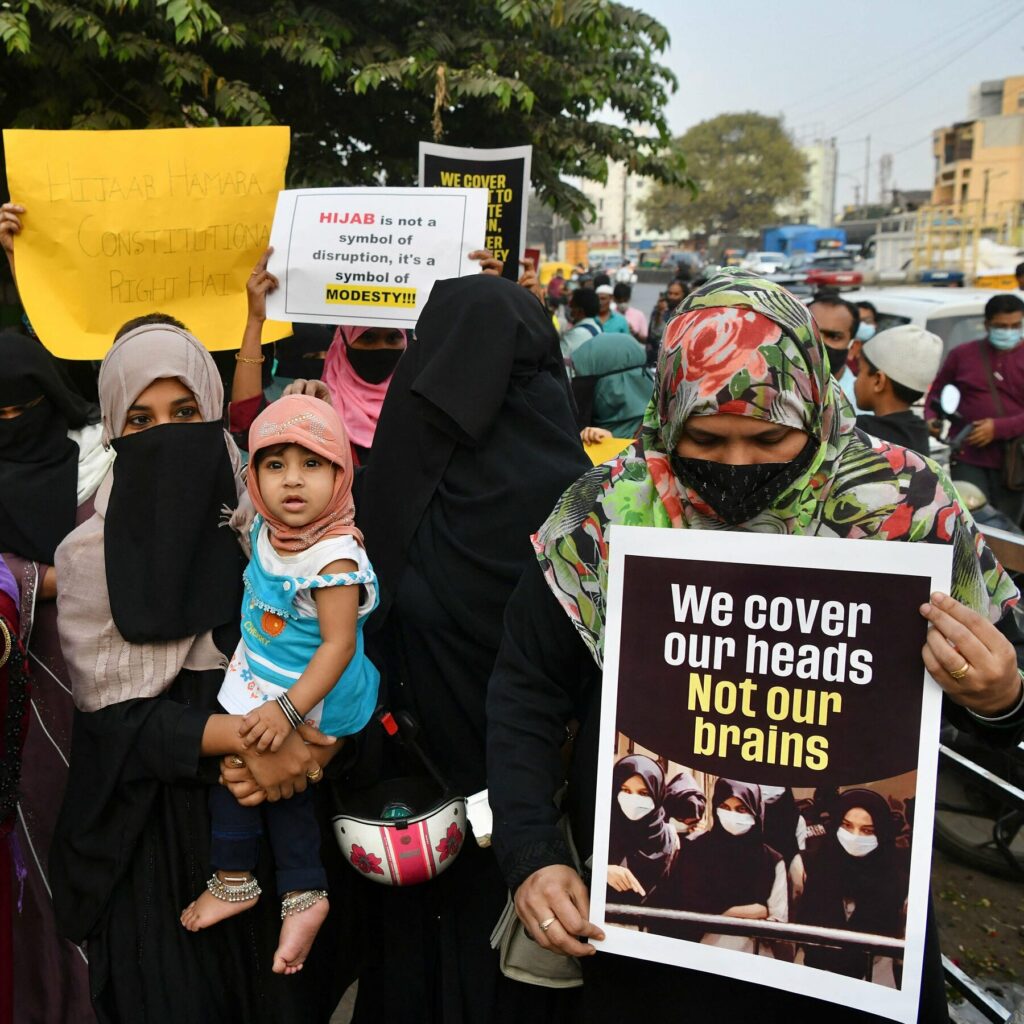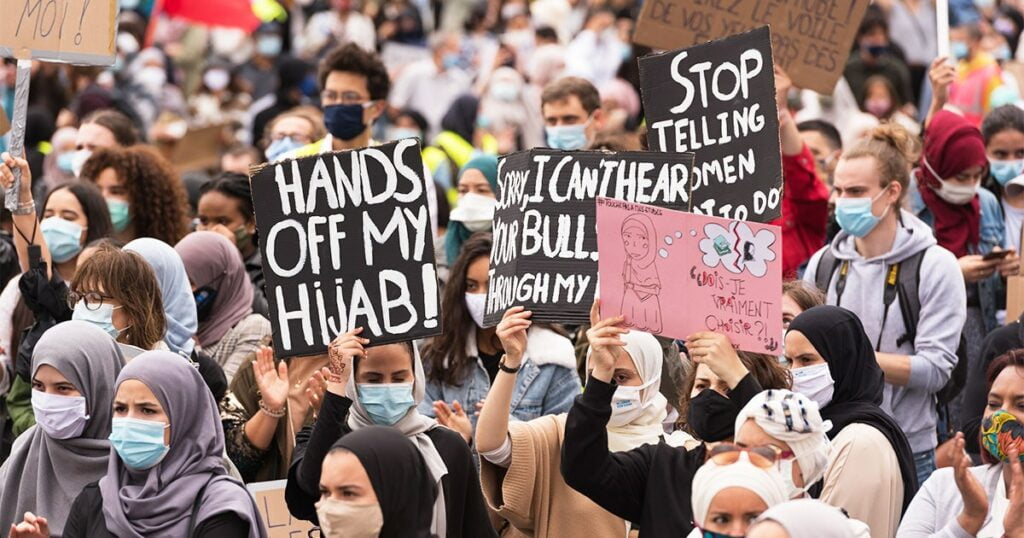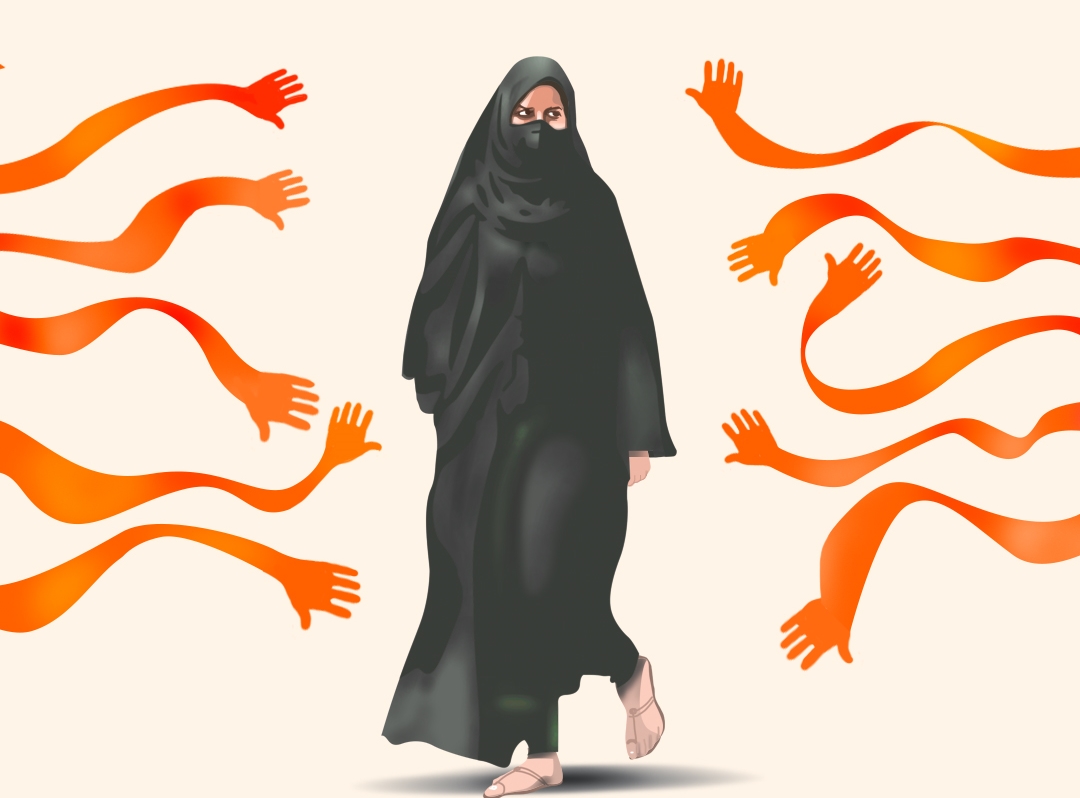Widespread hostility is experienced by women who wear clothes that are perceived as either too religious or not religious enough in several states. Only a few examples of how this prejudice eventually shows up include hatred, intimidation, and in some cases state repression. Women suffer either in silence or in revolt as a result of the state’s strong religious or ethical system, intolerance for diversity, political preferences, and authoritarian control. It is oppressive to women and their right to bodily autonomy to enforce dress codes in some Muslim nations and to forcibly remove headscarves in non-Muslim nations. However, it has been widely documented that Muslim women face greater hostility than non-Muslim women, particularly in light of the September 11 terrorist attacks and the rise in Islamophobia.
The People’s Union for Civil Liberties – Karnataka Unit (PUCL-K) released a report on the impact of the hijab ban on Muslim girl students in Karnataka. It documented that over 1,000 Muslim girls dropped out of PU colleges in Karnataka during the hijab controversy. The report, ‘Closing the Gates to Education: Violations of Rights of Muslim Women Students in Karnataka’, also examines the role of college authorities and administrative and police officials concerning the ban.
Muslim women have occasionally been told to take off their head coverings. Hijab wearers have experienced intimidation, harassment, job termination, and other forms of discrimination as a result. France’s mandatory hijab law is the finest illustration of how Muslim women are oppressed in the name of their faith. In 2004 France prohibited the wearing of Islamic head coverings in public schools. The niqab, a full-face Islamic veil, was made illegal in public spaces like streets, parks, transportation hubs, and business buildings in 2010. France has stricter aspirations than the rest of the world when it comes to further publicizing, targeting, and regulating Muslim women, and their clothing choices, as evidenced by the nation’s lawmakers’ decision to make it illegal for women and girls to wear hijabs while taking part in sports.

As per the sources reviewed for a recent Pew Research Center study, women in 56 countries reported experiencing social intolerance or harassment as a result of wearing clothing that was believed to violate the religious or secular dress codes of 198 countries. Social harassment incidents that meet this study’s criteria happened between 2016 and 2018. The bias can manifest itself in a variety of ways, including verbal abuse, physical harm, or murders that are at least partially motivated by the victim’s religious affiliation. In 61 different nations, women were required to adhere to government dress standards, including prohibitions on head coverings. This measure refers to regulations and incidents that took place in 2018.
Since India started to emulate France in 2014, there is currently more hostility toward Muslim women who wear hijabs. For the whole eight years that Roshana Khan (name changed), a Muslim woman wearing a hijab, worked in a government department in Delhi, she was required to show identification at the gate; nevertheless, all of her non-hijab-wearing coworkers were allowed entry without question. Roshana Khan adds, “This was the psychological harassment I had to go through just for being a hijabi Muslim woman.” In a recent incident, Muslim women students’ access to their college was restricted and they were instructed not to wear the hijab, which caused widespread fear among Muslims in India.
Also read: Karnataka Hijab Row: Clothing, Secularism And A Nation In Danger
In the Udupi district, in the southern Indian state of Karnataka, news crews gathered in front of the government-run college as word of the incident spread online. However, the tense standoff has caused Muslim students in the state to express fear that they are being denied their religious freedoms. The restriction on the hijab had the unintended consequence of preventing some girl students from taking their Board examinations and forcing others to request transfers, most likely to madrasas where they might not receive the same level of education. Because of discrimination based on religion, women have dropped out of schools which have resulted in another form of discrimination based on education. “If a young Muslim girl wants to dress modestly and cover her head. What has that got to do with education?” — Mohammad Sadiq, a parent whose daughter is a college student in India.

The People’s Union for Civil Liberties – Karnataka Unit (PUCL-K) released a report on the impact of the hijab ban on Muslim girl students in Karnataka. It documented that over 1,000 Muslim girls dropped out of PU colleges in Karnataka during the hijab controversy. The report, ‘Closing the Gates to Education: Violations of Rights of Muslim Women Students in Karnataka’, also examines the role of college authorities and administrative and police officials concerning the ban. These numerous forms of gender-based harassment are just one more way that women are oppressed. A story about the millions of Iranian women who are battling for their right to bodily autonomy and against the country’s strict clothing code stands in stark contrast to India.
In India, fringe groups frequently use the example of Iranian women to argue against the hijab and its removal. The narrative “women are opposing the hijab in Iran. To wear it, they are suing in India” is being propagated in India. In Iran women and girls are compelled against their will to cover their hair with a headscarf under the nation’s mandatory veiling regulations, for those as young as seven. Women who don’t are viewed negatively by the state as criminals. Iranian women are fighting back against the totalitarian government’s attempts to regulate how they should act in public. In India, women who want to wear their hijabs are fighting against a system that forces them to do so.
“Our uniform is an iconic representation of our brand, something that will carry us into our future, representing the very best of modern Britain and helping us deliver a great British original service for our customers.” He added, “From the very start this has been about our people. We wanted to create a uniform collection that our people are proud to wear and with the help of over 1,500 colleagues, we are confident that we have delivered this.”
Sean Doyle, British Airways Chairman, and CEO
Women in Iran are also battling against a regime that forces them to wear the hijab. Although the objectives of the women’s rallies in these two countries are different, they all oppose governments that wish to limit their freedom of choice in terms of what to wear and how to live their lives. In both countries, women long for freedom of choice. The battle to regain women’s control over their bodies is what Muslim women in both of these countries struggle with. “My choice to wear the hijab makes me feel safer, more independent, and more self-assured. I think people should recognize me for my intelligence rather than for how physically appealing I am,” says Gynecologist Asma Habib defending Hijab.

Having discussed several issues about women’s yearning for physical independence and their battle for control over their choice and wardrobe. Now, to gain greater insight, let’s look at the story from another perspective. For the first time in nearly 20 years, UK flag carrier British Airways just released a brand-new uniform for women who choose to wear modest clothing. An “airline first,” according to the carrier, will allow female cabin crew to dress in jumpsuits and hijab. According to a press release from the airline, it has also given female cabin crew members the choice of a jumpsuit and hijab. This move is a historic moment for the airline’s policy on women’s clothing.
Also read: Why I Choose To Wear Hijab: An Open Letter From A Tired Muslim Feminist
Sean Doyle, British Airways Chairman, and CEO said: “Our uniform is an iconic representation of our brand, something that will carry us into our future, representing the very best of modern Britain and helping us deliver a great British original service for our customers.” He added, “From the very start this has been about our people. We wanted to create a uniform collection that our people are proud to wear and with the help of over 1,500 colleagues, we are confident that we have delivered this.” Some people have criticized the practicality and design of the new uniform, even though Muslim women around the world have praised it as a step forward because it gives them the choice to wear whatever they want. British Airways’ decision will mainstream Muslim women and modest clothing in the eyes of the general public.
Giving women a right to what they wear and how they interact with the public is an effort to give them control over their life, and their choices will go a long way towards changing the perception of Muslim women. These are moves in the right direction since they will destigmatise modest clothing, the headscarf, and other religious symbols for women and provide a comfortable environment for them. In light of the aforementioned arguments, Indians must alter how they view women and their choices.
Encouragement can also be found in news from luxury brands that support modest clothing. The sportswear industry was stunned when Nike released the first- hijab in 2017, making history. It was a part of a project with Muslim athletes from the Middle East that started a bigger conversation about diversity in athletic apparel that is still going strong today. Following suit were high-end companies like Versace, Adidas, Puma, and Gucci.
Muslim women who want to be active or sporty may suffer greatly from the stress that comes with trying to select the right gym attire. According to the UAE-based modest activewear brand Unbound, 76% of women feel uneasy exercising in their current gym attire, and 91% claim that there aren’t many options for modest activewear. After all, the majority of popular choices are cropped tops or sports bras paired with skin-tight leggings or cycling shorts, which many Muslim women find to be too revealing.

With more and more Muslim women taking the spotlight, well-known sportswear brands like Nike, Puma, and Under Armour are beginning to exhibit interest in modest athletic attire. For Muslim women or women who like to dress modestly, new ground is being opened up by major brands endorsing modest clothing. Muslim women will have a newfound confidence and will want to travel along the avenues they had previously shied away from. “Muslim sportswomen can pursue their dream of being an athlete along with following their religious obligation without being judged by people,” says Parisa Khan, a national-level player. High-end brands are attempting to break into the substantial market for modest clothes among Muslims. It will generate profits for the brands, but it also has the advantage of educating people about modest clothing and Muslim women donning a hijab.
Also read: World Hijab Day: Don’t Hate What’s Strange
Giving women a right to what they wear and how they interact with the public is an effort to give them control over their life, and their choices will go a long way towards changing the perception of Muslim women. These are moves in the right direction since they will destigmatise modest clothing, the headscarf, and other religious symbols for women and provide a comfortable environment for them. In light of the aforementioned arguments, Indians must alter how they view women and their choices. Rise above all extreme religious beliefs, whether they are held by Muslims or Hindutva extremists. In actuality, making women remove their headscarves is just as disrespectful and misogynistic as making them wear them when they don’t want to. The essay ends with the hope that women will be free to express themselves without facing criticism for their wardrobe decisions.
About the author(s)
She is a Research Scholar, currently dedicated to pursuing her doctoral studies in the field of Political Science and International Relations. With more than ten years of hands-on experience across various media-related domains, she has established herself as a seasoned Media Professional.




